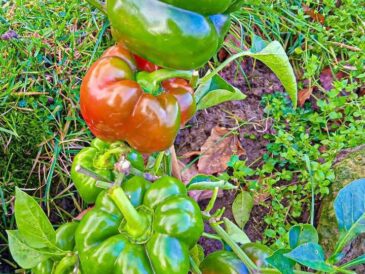Pruning Summer-Bearing Raspberries
- Identify Spent Floricanes: After harvesting, look for brown, woody canes that produced fruit.
- Remove Old Canes: Cut these canes at the base, close to the ground. Dispose of them to avoid pests and diseases.
- Thin Out Primocanes: Leave 4–6 of the healthiest primocanes per plant, spaced evenly to prevent overcrowding.
- Shorten Tall Canes: Trim the remaining primocanes to about 5–6 feet to encourage lateral branching.
Pruning Everbearing Raspberries
- For Two Crops:
- After the summer harvest, remove dead floricanes.
- In late winter or early spring, cut back the top of each primocane to remove the part that fruited in fall.
- For One Large Fall Crop:
- Cut all canes to the ground in late winter or early spring.
- This method eliminates the summer crop but focuses energy on the fall harvest.
Pruning Black and Purple Raspberries
- Tip the Primocanes: When new canes reach 24–30 inches, cut the tips to encourage lateral shoots.
- Remove Spent Canes: After fruiting, cut old canes at the base.
- Thin Lateral Branches: In early spring, prune side branches to 8–10 inches for better fruiting.
Common Mistakes to Avoid
- Pruning at the Wrong Time: Avoid cutting healthy canes in the growing season.
- Leaving Too Many Canes: Overcrowding reduces airflow and encourages disease.
- Neglecting Tool Maintenance: Dirty or dull tools can damage plants and spread infections.
Caring for Raspberries After Pruning
- Mulching: Apply a layer of organic mulch around the base of plants to retain moisture and suppress weeds.
- Fertilizing: Feed raspberries with a balanced fertilizer in early spring to support new growth.
- Watering: Maintain consistent moisture, especially during fruiting.
FAQs About Pruning Raspberries
1. Can I prune raspberries during summer?
You can remove spent floricanes after harvesting summer-bearing raspberries, but avoid cutting primocanes during the growing season.
2. How do I know if a cane is dead?
Dead canes are brown, brittle, and lack green tissue when scratched.
3. What happens if I don’t prune raspberries?
Unpruned raspberries become overcrowded, leading to smaller yields, increased disease risk, and lower-quality fruit.
4. Do I need to prune newly planted raspberries?
In their first year, focus on training and supporting new canes. Pruning begins in the second year.
5. Can I compost old canes?
It’s best to discard old canes, as they may harbor pests or diseases.
6. How tall should I let my raspberry canes grow?
Trim canes to 5–6 feet to make them manageable and encourage lateral fruiting.
Conclusion: Pruning for Success
Pruning raspberries is a simple yet effective way to ensure healthy plants and abundant harvests year after year. By following these tailored pruning techniques based on your raspberry variety, you can enjoy larger, tastier berries while keeping your garden organized and thriving. Embrace this practice, and your raspberry patch will reward you with sweet success! 🌱




